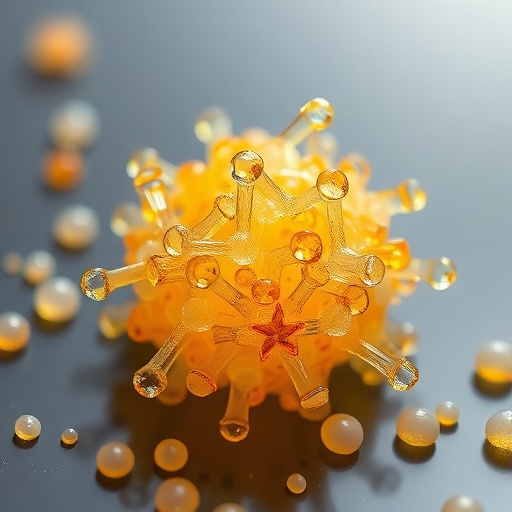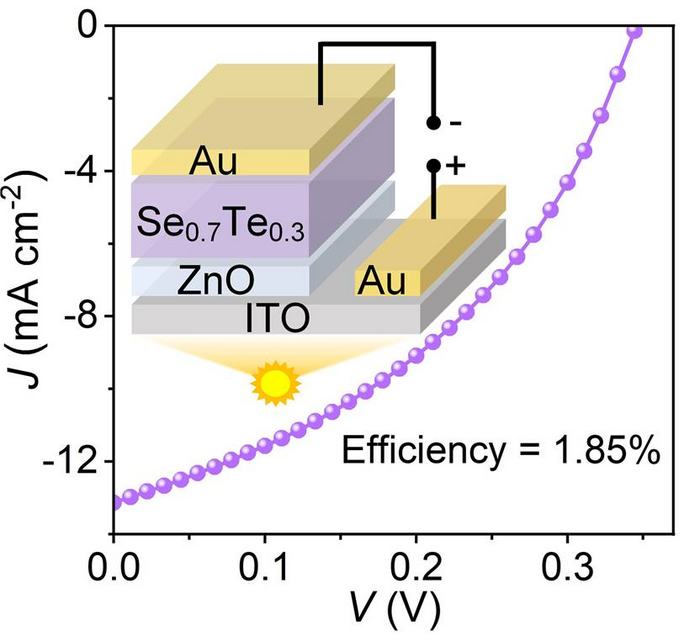In the ever-evolving battle against plastic pollution, researchers are turning to increasingly sophisticated analytical techniques to quantify and characterize microplastics. A groundbreaking study published in Microplastics & Nanoplastics offers compelling evidence that nuclear magnetic resonance (NMR) spectroscopy could transform the way scientists detect and measure these pervasive contaminants. By leveraging the nuanced molecular insights provided by NMR, this research unlocks unprecedented precision and efficiency in microplastic quantification—advancements that could revolutionize environmental monitoring and risk assessment protocols worldwide.
Microplastics, defined as plastic particles smaller than 5 millimeters, have emerged as a global environmental concern due to their omnipresence in oceans, soils, and even the air we breathe. Conventional detection methods often rely on spectroscopic techniques like FTIR (Fourier-transform infrared spectroscopy) and Raman spectroscopy, which while effective for identification, can suffer from limitations related to sensitivity, sample preparation complexity, and interference from environmental matrices. This new study, spearheaded by a team including Schmidt, Haave, Underhaug, and colleagues, proposes an innovative solution: harnessing the molecular specificity and quantitative capabilities of NMR spectroscopy to overcome these challenges.
NMR spectroscopy fundamentally operates on the principle of nuclear spin behavior in magnetic fields, providing detailed information about the chemical environment of atoms within molecules. Historically a stalwart analytical tool in chemistry and biochemistry, its adaptation for microplastic study marks a significant technical milestone. Through careful calibration and methodological refinement, the researchers demonstrated that NMR could detect microplastic polymers at trace concentrations with remarkable precision, even within complex environmental samples. This breakthrough not only allows for more accurate quantification but also aids in determining polymer composition without extensive sample purification.
.adsslot_ozNf9qF5k2{ width:728px !important; height:90px !important; }
@media (max-width:1199px) { .adsslot_ozNf9qF5k2{ width:468px !important; height:60px !important; } }
@media (max-width:767px) { .adsslot_ozNf9qF5k2{ width:320px !important; height:50px !important; } }
ADVERTISEMENT
A critical aspect of the study involved optimizing NMR parameters to maximize signal sensitivity and reduce the noise inherent to environmental sample matrices. By tuning pulse sequences and employing advanced data processing algorithms, the team enhanced the spectral resolution, enabling clear differentiation between microplastic particles and biological or mineral matter. This level of discrimination is paramount for field studies, where samples typically feature heterogeneous mixtures that confound simpler analytical procedures. The success of this approach suggests that NMR can serve as both a qualitative and quantitative powerhouse in microplastic research.
Moreover, the method shows promise for high-throughput analysis, a crucial factor considering the sheer volume of environmental samples requiring investigation globally. Traditional microplastic quantification methods often entail laborious filtration, extraction, and identification steps, bottlenecking large-scale monitoring efforts. The NMR technique described in the study reduces these processing stages, facilitating more rapid yet reliable measurements. As a result, environmental monitoring programs and regulatory agencies may soon have access to more timely data upon which to base mitigation strategies.
The molecular-level insights gained from NMR do not only enhance quantification accuracy but also allow researchers to discern degradation products and additives inherent to microplastic particles. Such information is vital for understanding the ecological and toxicological impacts of microplastic pollution. By characterizing polymer additives and breakdown intermediates, scientists can better predict the environmental fate and biological interactions of microplastics, offering a comprehensive picture that extends beyond mere particle counts.
The implementation of NMR for microplastic study dovetails with recent advances in computational chemistry and data analysis. The research team employed sophisticated machine learning algorithms to deconvolute complex spectra, extracting meaningful signatures from overlapping signals. This coupling of experimental innovation with artificial intelligence marks a forward leap in analytical methodology. It not only improves interpretative clarity but also paves the way for automated, scalable analysis pipelines that can handle the vast datasets generated by environmental sampling.
The implications of this technology extend into the realm of policy and public health. With more precise data on microplastic burdens in water, soil, and biota, health risk assessments can be recalibrated to better reflect real-world exposure scenarios. Regulators and stakeholders will be equipped with more reliable evidence to set safety thresholds and design targeted remediation strategies. Furthermore, the ability to detect minute concentrations of microplastics holds relevance for the food industry, enabling quality controls that safeguard consumers from inadvertent ingestion of plastic contaminants.
From an environmental engineering perspective, this work suggests new avenues for pollution source tracking and lifecycle analysis. By identifying specific polymer types and their molecular fingerprints, forensic studies can trace microplastic origins with improved certainty. This capability is invaluable for pinpointing industrial discharge points, urban runoff contributions, or degradation hotspots. Consequently, mitigation efforts can be more accurately directed, increasing their efficacy and reducing unnecessary expenditures.
Beyond the scientific community, the accessibility and adaptability of NMR-based methods could democratize microplastic monitoring. Unlike some specialized spectroscopic instruments that require extensive expertise and costly maintenance, many research institutions and environmental agencies already possess NMR facilities. The translation of these existing assets toward microplastic analysis could accelerate the global data collection effort, fostering collaborative networks that share insights and standardize methodologies.
The technique’s versatility also lends itself well to studying nanoplastics—submicron-scale plastic particles whose environmental and health consequences remain poorly understood. Due to their diminutive size, nanoplastics evade detection by traditional optical spectroscopies. NMR’s sensitivity to molecular environments presents an attractive alternative to bridge this gap, helping to elucidate the properties and prevalence of these elusive contaminants. As such, future work is likely to extend these methods into the nanoscale domain, further broadening their impact.
Despite these impressive strides, the research acknowledges certain limitations and areas needing further development. For example, while NMR provides exceptional chemical detail, it generally lacks the spatial resolution offered by microscopic techniques. Integrating NMR data with complementary imaging modalities could yield holistic insights encompassing both molecular identity and particle morphology. Additionally, the high initial cost and operational expertise required to optimize NMR instruments for environmental samples may pose adoption barriers in under-resourced regions, highlighting the need for continued technological democratization.
Nevertheless, by demonstrating that NMR spectroscopy can quantify microplastics with enhanced precision and operational efficiency, this study lays a sturdy foundation for next-generation pollution assessment methods. As microplastic contamination threatens aquatic ecosystems, agricultural productivity, and human health, innovative tools like this become indispensable components of our scientific arsenal.
Looking forward, multidisciplinary collaborations between chemists, environmental scientists, toxicologists, and data scientists will be crucial to fully exploit the potential unlocked by NMR-based microplastic quantification. Joint efforts should focus on standardizing protocols, expanding reference libraries of polymer spectra, and integrating data with ecological models. Such synergies promise not only to improve our understanding of microplastic pollution but also to inform sustainable policy frameworks that mitigate its impacts.
In a world increasingly aware of anthropogenic environmental pressures, precise and efficient measurement tools form the bedrock of evidence-based decision making. The advent of advanced NMR strategies for microplastic detection represents a vital leap toward this goal, empowering scientists and policymakers alike to tackle one of our planet’s most stubborn pollutants with renewed clarity and rigor.
Subject of Research: Precise and efficient quantification of microplastics using nuclear magnetic resonance (NMR) spectroscopy.
Article Title: Unlocking the potential of NMR spectroscopy for precise and efficient quantification of microplastics.
Article References:
Schmidt, J., Haave, M., Underhaug, J. et al. Unlocking the potential of NMR spectroscopy for precise and efficient quantification of microplastics. Micropl.& Nanopl. 4, 17 (2024). https://doi.org/10.1186/s43591-024-00095-5
Image Credits: AI Generated
Tags: advancements in analytical chemistry for pollutionadvantages of NMR in detecting microplasticsapplications of nuclear magnetic resonance in ecologychallenges in conventional microplastic detectionenvironmental risk assessment of microplasticsinnovative approaches to plastic pollutionmicroplastic quantification techniquesmicroplastics in oceans and soilsmolecular insights from NMR spectroscopyNMR spectroscopy for environmental monitoringplastic pollution research and methodologiestransforming environmental science with NMR technology






